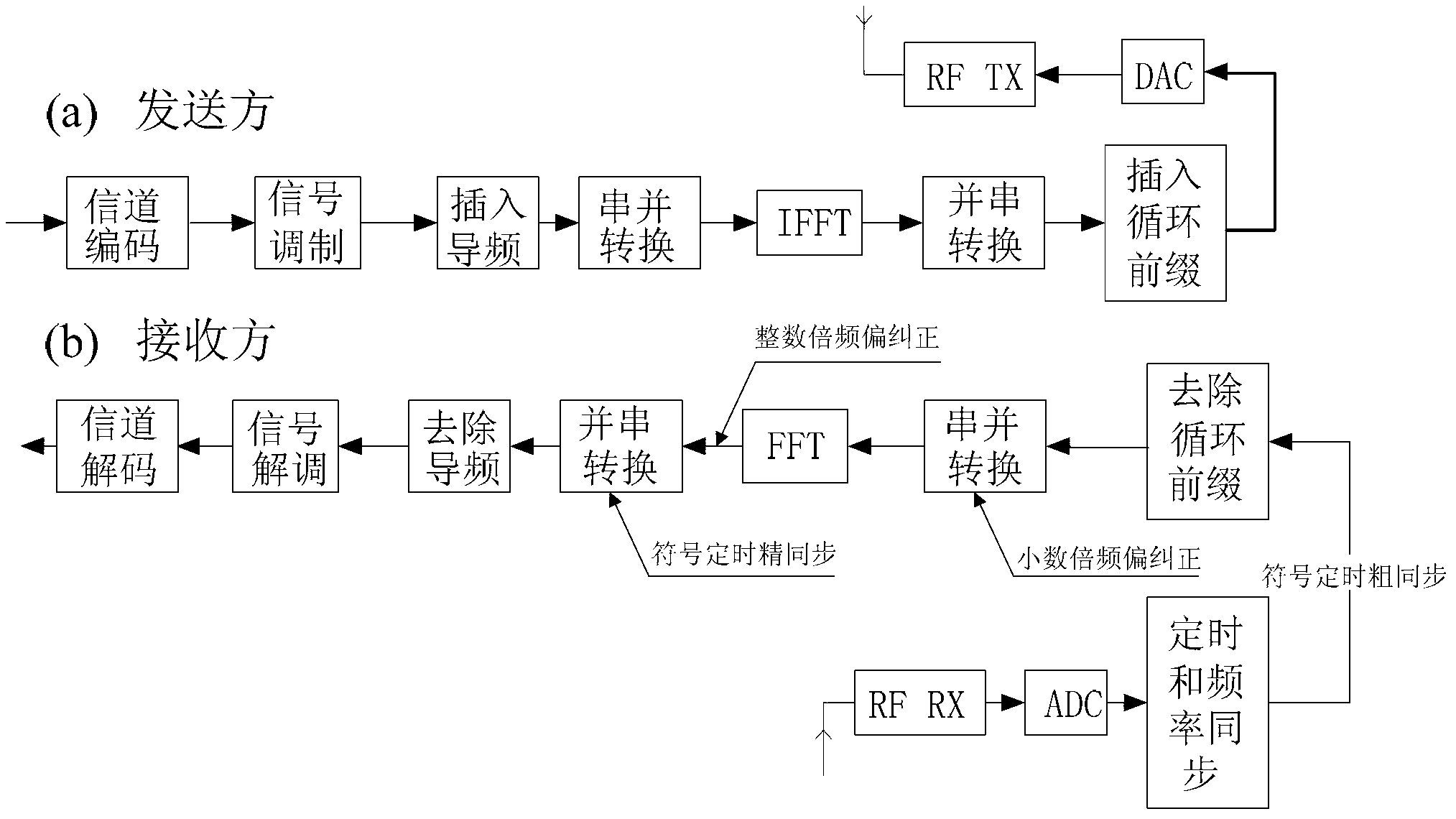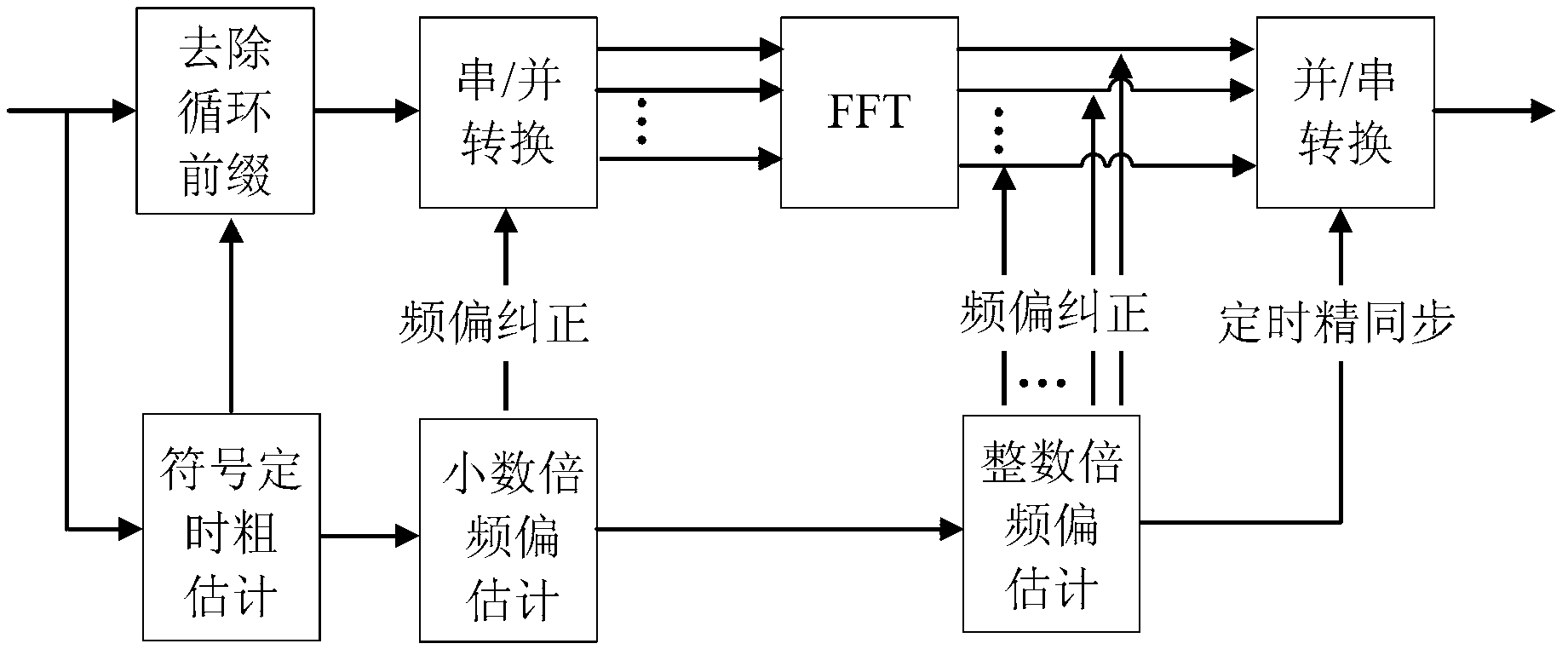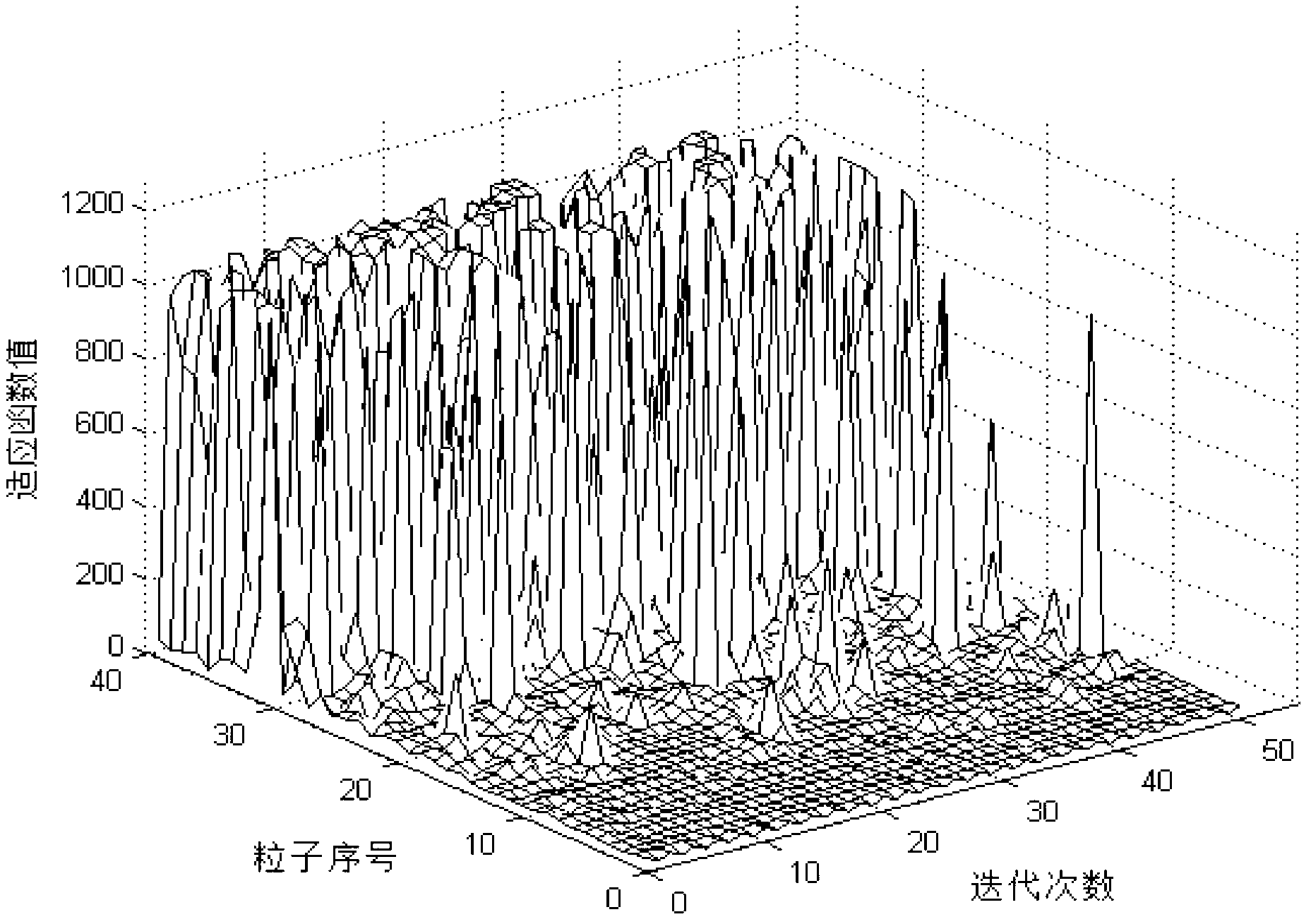OFDM (Orthogonal Frequency Division Multiplexing) symbol timing and frequency offset estimation method based on particle swarm optimization (PSO) algorithm
A technology of particle swarm optimization and symbolic timing, applied in the direction of multi-frequency code system, etc., can solve problems such as time-consuming, large amount of calculation, complicated synchronization process, etc.
- Summary
- Abstract
- Description
- Claims
- Application Information
AI Technical Summary
Problems solved by technology
Method used
Image
Examples
Embodiment Construction
[0046] Below in conjunction with the accompanying drawings, specific embodiments of the present invention are given to further illustrate the present invention.
[0047] In the embodiment of the present invention, the figure 1 The shown OFDM transmission system contains timing and frequency synchronization modules, figure 1 In the process, the sender performs channel coding and digital modulation on the signal to be transmitted, inserts the pilot signal, and then performs serial / parallel conversion, divides the OFDM symbol into N parallel sub-signals, and passes the inverse fast Fourier transform (IFFT ) respectively modulates each sub-signal to N sub-carriers to realize multi-carrier modulation, and the signal is transformed from the frequency domain to the time domain. After parallel / serial conversion, a cyclic prefix (CP) is added to form a complete digital signal of OFDM symbols. After digital-to-analog conversion (DAC), it is modulated to the transmission frequency by up...
PUM
 Login to View More
Login to View More Abstract
Description
Claims
Application Information
 Login to View More
Login to View More - R&D
- Intellectual Property
- Life Sciences
- Materials
- Tech Scout
- Unparalleled Data Quality
- Higher Quality Content
- 60% Fewer Hallucinations
Browse by: Latest US Patents, China's latest patents, Technical Efficacy Thesaurus, Application Domain, Technology Topic, Popular Technical Reports.
© 2025 PatSnap. All rights reserved.Legal|Privacy policy|Modern Slavery Act Transparency Statement|Sitemap|About US| Contact US: help@patsnap.com



